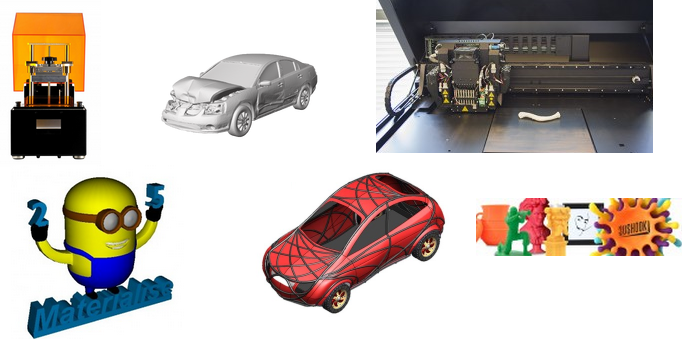This week’s news we didn’t cover includes new 3D printing services, such as Materialise’s upcoming massive 3D model database, Scanning Cars’ online selection of printable auto models, and Israel-based 3DShook’s new unlimited printing subscription. Reify’s stereolithographic 3D printer, Solus DLP, is improved and can be pre-ordered, and a team from Indiana University-Purdue University Indianapolis has won an innovative design competition for lightweight cars. In medical news out of the Netherlands, one Dutch team has invented a moisture-holding hydrogel that is compatible with large-scale regenerative bone cartilage repair, and another Dutch team has printed the first human clavicle for use in a surgery preparation. Last but not least, a new San Francisco-based company claims it can bioprint rhino horns to replace poaching and save the species. Here’s hoping!
3D Print Sentimental Cars with ScanningCars.com
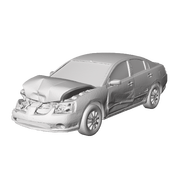 Scanning Cars is a service that allows you to 3D print a very wide variety of cars, for a relatively cheap price. But be warned: not all of the car models are desirable by today’s standards, and that is precisely the service’s point. Take, for example, the Oldsmobile you had your first prom date in or the wood paneled station wagon your mom used to carpool you in (yes, my mom had one of those). These are sentimental objects that you may want to 3D print, and now Scanning Cars could make that possible. Sure, the service offers the usual “dream cars” — which for me is a champagne colored Bentley convertible with hot pink interior — but it also has models that have more sentimental charm. Some of these models are long retired but they live on in our memories. You can download printable meshes for many models for around $8, and two meshes are usually included: one with moving wheels and one without. The model with moving wheels requires separate printing and assembly.
Scanning Cars is a service that allows you to 3D print a very wide variety of cars, for a relatively cheap price. But be warned: not all of the car models are desirable by today’s standards, and that is precisely the service’s point. Take, for example, the Oldsmobile you had your first prom date in or the wood paneled station wagon your mom used to carpool you in (yes, my mom had one of those). These are sentimental objects that you may want to 3D print, and now Scanning Cars could make that possible. Sure, the service offers the usual “dream cars” — which for me is a champagne colored Bentley convertible with hot pink interior — but it also has models that have more sentimental charm. Some of these models are long retired but they live on in our memories. You can download printable meshes for many models for around $8, and two meshes are usually included: one with moving wheels and one without. The model with moving wheels requires separate printing and assembly.
3D Printed Waterdrop Car Design Wins Litecar Challenge
 Speaking of cars, more than 250 conceptual designs were submitted to Local Motors’ LITECAR Challenge, which seeks to improve car design through innovative approaches that make the cars weigh less while still following automobile safety regulations (LITECAR stands for LIghtweighting Technologies Enabling Comprehensive Automotive Redesign). The winning team from Indiana University-Purdue University Indianapolis (IUPUI)’s School of Engineering and Technology submitted a “waterdrop” design that reduces overall fuel consumption of the vehicle. The winning design features a novel layout, an innovative multi-material design, and a cutting edge manufacturing process that uses 3D printing for waste minimization, better customization options, and reduced expense and time to market. You can check out the winning design and other entries on the Local Motors website here.
Speaking of cars, more than 250 conceptual designs were submitted to Local Motors’ LITECAR Challenge, which seeks to improve car design through innovative approaches that make the cars weigh less while still following automobile safety regulations (LITECAR stands for LIghtweighting Technologies Enabling Comprehensive Automotive Redesign). The winning team from Indiana University-Purdue University Indianapolis (IUPUI)’s School of Engineering and Technology submitted a “waterdrop” design that reduces overall fuel consumption of the vehicle. The winning design features a novel layout, an innovative multi-material design, and a cutting edge manufacturing process that uses 3D printing for waste minimization, better customization options, and reduced expense and time to market. You can check out the winning design and other entries on the Local Motors website here.
Save the Rhino with Printable Horns?
 3D printing can be used for more whimsical pastimes, like car model collections, but it can also be tasked with a serious mission. For the new rhino horn bioprinting company, Pembient, the task is nothing short of saving the rhino from total extinction, as we reported on in February. The rhino is poached in large numbers for its ivory and its horn’s medicinal properties, driving down its population’s numbers to threatening all time lows. Pembient’s mission, since 2006 when it was co-founded by one software and one genetic engineer, is to bioprint the horns to exact genetic specifications so there will be no demand for real rhino horns anymore. Rhino horns are made of a keratin protein and this is the material Pembient is using to print the horns. The results are such that people wouldn’t be able to tell the difference between bioprinted horns and the real thing. Pembient says it will eventually print other endangered animal parts, like elephant tusks, but for now its focused on marketing its rhino horn — just in the nick of time?
3D printing can be used for more whimsical pastimes, like car model collections, but it can also be tasked with a serious mission. For the new rhino horn bioprinting company, Pembient, the task is nothing short of saving the rhino from total extinction, as we reported on in February. The rhino is poached in large numbers for its ivory and its horn’s medicinal properties, driving down its population’s numbers to threatening all time lows. Pembient’s mission, since 2006 when it was co-founded by one software and one genetic engineer, is to bioprint the horns to exact genetic specifications so there will be no demand for real rhino horns anymore. Rhino horns are made of a keratin protein and this is the material Pembient is using to print the horns. The results are such that people wouldn’t be able to tell the difference between bioprinted horns and the real thing. Pembient says it will eventually print other endangered animal parts, like elephant tusks, but for now its focused on marketing its rhino horn — just in the nick of time?
Cartilage Repair Advanced through 3D Printable Fiber Structures
 From tusks to bones, the University Medical Center in Utrecht, Netherlands, has made a significant medical advance related to bone cartilage repair. A research team has developed a polymer-based hydrogel that retains a large amount of moisture and can therefore be used as a carrier substance for cells during regenerative treatments. In fact, these hydrogels are already used on a smaller scale for cell therapy treatment, but this latest advancement allows this kind of treatment to be used on a larger scale. 3D printed fiber networks supported by the carrier hydrogels mimic joint cartilage properties. Because the new hydrogel is firmer and more elastic than previously used materials, it can be used to restore larger joint parts. 3D printing also aids in potentially replicating original joint shapes, and in many other medical applications related to bone cartilage repair.
From tusks to bones, the University Medical Center in Utrecht, Netherlands, has made a significant medical advance related to bone cartilage repair. A research team has developed a polymer-based hydrogel that retains a large amount of moisture and can therefore be used as a carrier substance for cells during regenerative treatments. In fact, these hydrogels are already used on a smaller scale for cell therapy treatment, but this latest advancement allows this kind of treatment to be used on a larger scale. 3D printed fiber networks supported by the carrier hydrogels mimic joint cartilage properties. Because the new hydrogel is firmer and more elastic than previously used materials, it can be used to restore larger joint parts. 3D printing also aids in potentially replicating original joint shapes, and in many other medical applications related to bone cartilage repair.
Delft University of Technology 3D Prints First Human Clavicle
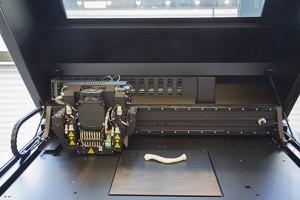 Make no bones about it, 3D printing is gaining traction in medicine, as this week’s medical news reports. We have the above story of a new hydrogel for bone cartilage repair, and the Netherlands also brings us another medical 3D printed bone story as well. This story is from the Delft University of Technology in the Netherlands, which has a 3D printer that can mix three different colors and materials (such as hard and transparent rubbers) into one object. This printer is the first of its kind in the Netherlands, and TU Delft’s Applied Lab of Industrial Design decided to use it to print a human clavicle to be used by a Rotterdam trauma surgeon to prepare for an operation. Just another example of medical ingenuity and 3D printing working together!
Make no bones about it, 3D printing is gaining traction in medicine, as this week’s medical news reports. We have the above story of a new hydrogel for bone cartilage repair, and the Netherlands also brings us another medical 3D printed bone story as well. This story is from the Delft University of Technology in the Netherlands, which has a 3D printer that can mix three different colors and materials (such as hard and transparent rubbers) into one object. This printer is the first of its kind in the Netherlands, and TU Delft’s Applied Lab of Industrial Design decided to use it to print a human clavicle to be used by a Rotterdam trauma surgeon to prepare for an operation. Just another example of medical ingenuity and 3D printing working together!
Materialise Works on Massive 3D Printable Model Service
3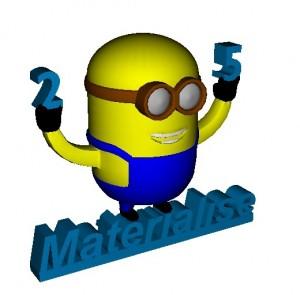 D printing software giant Materialise unveiled a new collaboration at its 2015 Materialise World Conference. In the streamlining spirit, Materialise plans to use its cloud services to make available around 2.7 million 3D printable models to SketchUp‘s over 30 million designers/users through Trimble’s 3D Warehouse’s database. The goal? The project is in its beta phase, but eventually SketchUp’s database will have one of the largest 3D printable model selections of functional everyday products. This would be the largest service like this to date, and one that seems to fit the needs of 3D printing fans and open the concept up to more people, making 3D printing more of a household necessity than a luxury hobby or occupation.
D printing software giant Materialise unveiled a new collaboration at its 2015 Materialise World Conference. In the streamlining spirit, Materialise plans to use its cloud services to make available around 2.7 million 3D printable models to SketchUp‘s over 30 million designers/users through Trimble’s 3D Warehouse’s database. The goal? The project is in its beta phase, but eventually SketchUp’s database will have one of the largest 3D printable model selections of functional everyday products. This would be the largest service like this to date, and one that seems to fit the needs of 3D printing fans and open the concept up to more people, making 3D printing more of a household necessity than a luxury hobby or occupation.
New Unlimited 3D Printing Service: 3DShook
 While Materialise is shaking up the 3D printing marketplace with its model plans, an Israel-based company, 3DShook, is shaking things up by offering unlimited 3D printing subscriptions for as low as $14.90/month in a Netflix-like model. With 40 categories of objects and over 600 printable models, users will have no shortage of options when it comes to using their subscriptions, either. In addition to the models, which have all been tested by in-house designers, the company has its own online viewing system and it offers tools to scale, position, and prep models for 3D printing. The site is still in its beta phase, but you can check out its rate packages, which includes a free two print trial run, and monthly ($14.90), 6 month ($74.90), and yearly ($99.90) rates for a set amount of prints.
While Materialise is shaking up the 3D printing marketplace with its model plans, an Israel-based company, 3DShook, is shaking things up by offering unlimited 3D printing subscriptions for as low as $14.90/month in a Netflix-like model. With 40 categories of objects and over 600 printable models, users will have no shortage of options when it comes to using their subscriptions, either. In addition to the models, which have all been tested by in-house designers, the company has its own online viewing system and it offers tools to scale, position, and prep models for 3D printing. The site is still in its beta phase, but you can check out its rate packages, which includes a free two print trial run, and monthly ($14.90), 6 month ($74.90), and yearly ($99.90) rates for a set amount of prints.
Solus DLP 3D Printer is Redesigned and Available Soon
T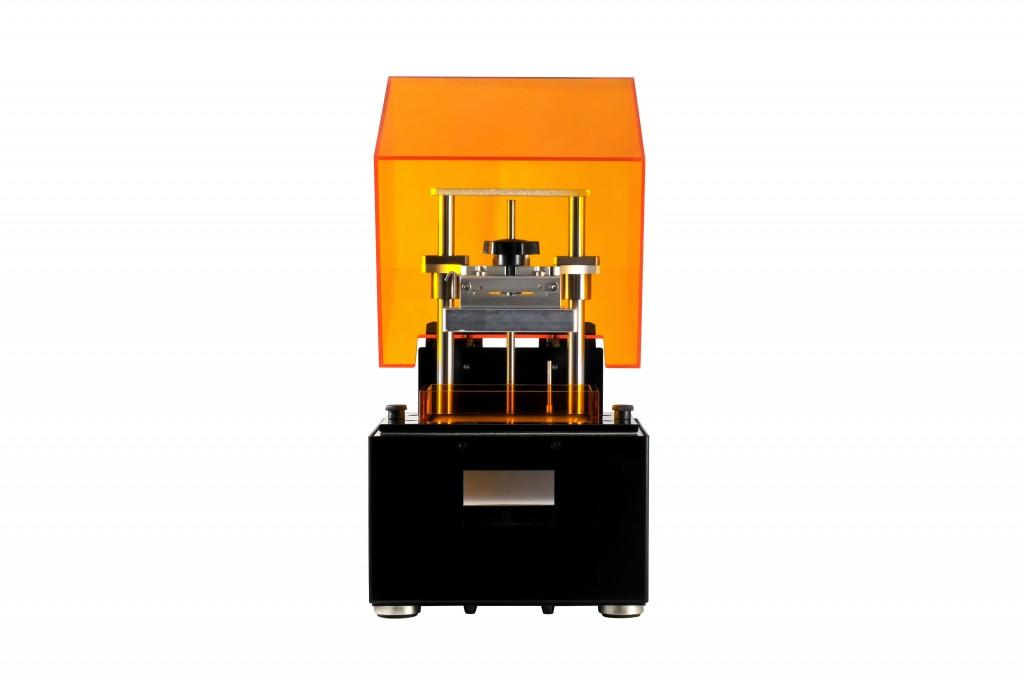 aiwan-based 3D printer manufacturer Reify 3D has been working diligently to improve its low-cost and high functioning stereolithography printer, the Solus DLP, for two years now. This effort was aided by an Indiegogo campaign that raised around half of its $50,000 goal for this printer that Reify 3D plans to market to jewelry and miniatures designers and manufacturers. This resin printer, which will need a DLP projector to operate, can use third party resins and runs off Creation Workshop software. It has two possible build area sizes, and also features many mechanical improvements. Its patent-pending separation mechanism is the key to its smooth prints, claims the company. The projector is not included with the printer, which costs $2,299 and can be pre-ordered off the company website for US sales here and international sales here. The company currently needs a 4-6 week lead time on pre-orders.
aiwan-based 3D printer manufacturer Reify 3D has been working diligently to improve its low-cost and high functioning stereolithography printer, the Solus DLP, for two years now. This effort was aided by an Indiegogo campaign that raised around half of its $50,000 goal for this printer that Reify 3D plans to market to jewelry and miniatures designers and manufacturers. This resin printer, which will need a DLP projector to operate, can use third party resins and runs off Creation Workshop software. It has two possible build area sizes, and also features many mechanical improvements. Its patent-pending separation mechanism is the key to its smooth prints, claims the company. The projector is not included with the printer, which costs $2,299 and can be pre-ordered off the company website for US sales here and international sales here. The company currently needs a 4-6 week lead time on pre-orders.
And those are this week’s 3D printing stories we didn’t cover! Let us know what you think of this news in the Stories We Missed forum thread over at 3DPB.com.
Subscribe to Our Email Newsletter
Stay up-to-date on all the latest news from the 3D printing industry and receive information and offers from third party vendors.
You May Also Like
Gorilla Sports GE’s First 3D Printed Titanium Cast
How do you help a gorilla with a broken arm? Sounds like the start of a bad joke a zookeeper might tell, but it’s an actual dilemma recently faced by...
Nylon 3D Printed Parts Made More Functional with Coatings & Colors
Parts 3D printed from polyamide (PA, Nylon) 12 using powder bed fusion (PBF) are a mainstay in the additive manufacturing (AM) industry. While post-finishing processes have improved the porosity of...
$25M to Back Sintavia’s Largest Expansion of Metal 3D Printing Capacity Since 2019
Sintavia, the digital manufacturing company specializing in mission-critical parts for strategic sectors, announced a $25 million investment to increase its production capacity, the largest expansion to its operations since 2019....
Velo3D Initiates Public Offering in a Bid to Strengthen Financial Foundations and Drive Future Growth
Velo3D (NYSE: VLD) has been among a number of publicly traded 3D printing firms that have attempted to weather the current macroeconomic climate. After posting a challenging financial report for 2023,...


